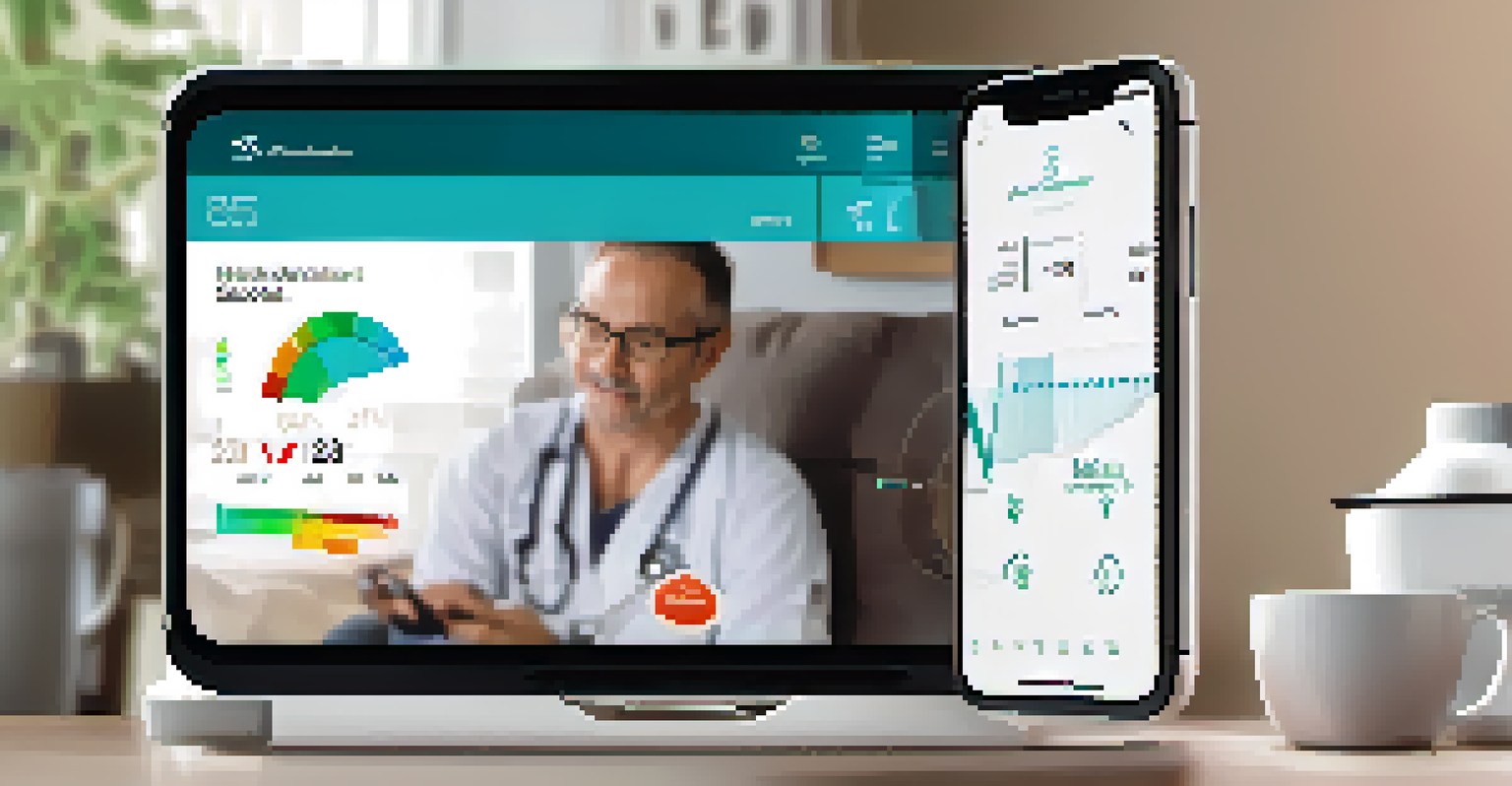Telehealth Solutions: Bridging Gaps in Rural Healthcare Access

Understanding Telehealth: A Lifeline for Rural Communities
Telehealth refers to the delivery of healthcare services through digital technology, enabling patients to connect with providers remotely. This is particularly beneficial in rural areas where access to healthcare facilities can be limited. By using telehealth, individuals living in remote locations can receive timely medical advice without the need for long travel.
Telehealth is a vital tool for expanding access to healthcare, especially in rural areas where resources are limited.
Imagine living in a small town miles away from the nearest hospital. For many, a simple consultation can turn into a day-long journey. Telehealth not only saves time but also reduces the burden on local healthcare systems, allowing providers to focus on patients in need of in-person care.
As we dive deeper into this topic, it's essential to recognize how telehealth is not just a trend but a crucial component in modernizing healthcare, especially in areas that have historically faced accessibility challenges.
The Benefits of Telehealth in Rural Healthcare
One of the most significant advantages of telehealth is convenience. Patients can schedule appointments from the comfort of their homes, removing barriers like transportation and time constraints. This accessibility is vital for individuals who may have mobility issues or lack reliable transportation.

Additionally, telehealth can improve health outcomes by ensuring that patients receive timely interventions. For instance, someone experiencing symptoms of a chronic illness can consult a healthcare provider quickly, preventing complications and promoting proactive management.
Telehealth Enhances Access to Care
Telehealth provides crucial healthcare access for rural communities, allowing patients to connect with providers without the need for extensive travel.
Moreover, the ability to connect with specialists who may not be available locally means that patients can receive comprehensive care without the stress of long-distance travel. This holistic approach to healthcare can lead to better overall health for rural populations.
Overcoming Barriers to Telehealth Adoption
Despite its many benefits, there are challenges to the widespread adoption of telehealth in rural areas. One significant barrier is the lack of reliable internet access, which can hinder video consultations and limit the effectiveness of virtual care. Improving broadband infrastructure is crucial for enhancing telehealth services.
The future of healthcare is in technology, and telehealth is leading the way in providing care to those who need it most.
Another challenge is the need for healthcare providers to be trained in using telehealth technologies. Familiarizing medical staff with these tools ensures that they can effectively deliver care and manage patient interactions online. Ongoing training and support can make a substantial difference in the quality of telehealth services.
Lastly, addressing regulatory and reimbursement issues is essential. Ensuring that telehealth services are covered by insurance and that providers are reimbursed fairly can encourage more practitioners to offer virtual care options.
Real-World Examples of Telehealth Success
Many rural healthcare facilities have successfully integrated telehealth into their services. For instance, some hospitals have implemented telepsychiatry programs, allowing patients to receive mental health support without traveling far distances. This has been particularly beneficial during the pandemic when in-person visits were limited.
Another example includes rural clinics partnering with larger healthcare systems to provide specialty consultations through telehealth. Patients needing cardiology or endocrinology assessments can now see specialists from their local clinic, ensuring they receive the care they need while minimizing travel.
Technology Drives Telehealth Growth
Advancements in technology, such as mobile health apps and AI, are expanding telehealth services and making them more user-friendly for patients.
These success stories highlight that telehealth is not just a concept but a practical solution that has already made a positive impact in many communities, paving the way for broader acceptance and implementation.
The Role of Technology in Telehealth Expansion
Technology plays a crucial role in the expansion of telehealth services. From high-definition video conferencing tools to secure messaging platforms, the right technology can make virtual consultations seamless and effective. As these technologies continue to evolve, they become more user-friendly and accessible to patients of all ages.
Mobile health applications are also gaining traction, allowing patients to track their health metrics and communicate with providers easily. Imagine being able to monitor your blood pressure or glucose levels and share that data with your doctor in real time; this level of engagement empowers patients in their health journey.
Furthermore, advancements in artificial intelligence (AI) and machine learning are set to enhance telehealth services. These technologies can help in triaging patients, providing personalized recommendations, and even predicting health trends in rural populations.
Addressing Privacy and Security in Telehealth
As telehealth grows, so do concerns about privacy and security. Patients must feel confident that their health information is protected during virtual visits. Healthcare providers are required to adhere to strict regulations, such as HIPAA in the United States, ensuring that patient data is kept confidential.
Implementing strong cybersecurity measures is essential in safeguarding sensitive information. This includes encryption for data transmission and secure access protocols for healthcare platforms. Healthcare providers must stay proactive in addressing these issues to maintain patient trust.
Security is Key for Telehealth Trust
Addressing privacy and security concerns is essential for maintaining patient trust in telehealth services, ensuring their data is protected.
Moreover, educating patients about their rights regarding privacy and how their data will be used can help alleviate concerns. Transparency in these processes is key to fostering a secure environment for telehealth.
The Future of Telehealth in Rural Areas
Looking ahead, the future of telehealth in rural healthcare appears promising. With ongoing advancements in technology and increasing acceptance of virtual care, we can expect to see even more innovative solutions tailored to meet the unique needs of rural populations. This evolution could lead to improved health outcomes and greater patient satisfaction.
Additionally, as telehealth becomes more integrated into healthcare systems, we may see a shift in how providers deliver care. This could include more hybrid models that combine in-person visits with telehealth services, offering patients a flexible approach to their healthcare needs.

Ultimately, the continued investment in telehealth infrastructure and education will be vital in bridging gaps in rural healthcare access, ensuring that every individual receives the care they deserve, regardless of their location.